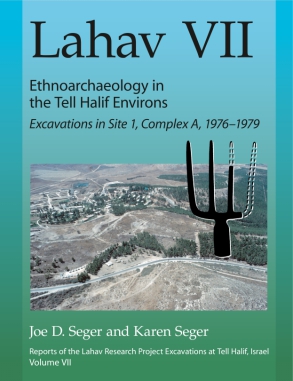
Lahav VII: Ethnoarchaeology in the Tell Halif Environs
Excavations in Site 1, Complex A, 1976–1979
Joe D. Seger and Karen Seger
Lahav VII: Ethnoarchaeology in the Tell Halif Environs
Excavations in Site 1, Complex A, 1976–1979
Joe D. Seger and Karen Seger
This seventh volume of final reports of the Lahav Research Project’s efforts at Tell Halif in Southern Israel focuses on the team’s excavations and related regional ethnographic research at adjacent Khirbet Khuweilifeh, an early twentieth-century settlement of Bedouin and Arab fellahin clients. These efforts illustrate the symbiosis between the itinerant Bedouin and their seasonal sharecropper neighbors along the northern flanks of the Negev desert during and following the First World War in southern Palestine.
- Description
- Bio
The stratigraphic excavation and recovery of material culture from Cave Complex A revealed a pattern of occupation dating from the late nineteenth century C.E. up to the mid-1940s and produced hundreds of artifacts and samples, giving testimony to the lifeways of the fellahin who had inhabited the complex. The associated ethnographic research with Bedouin sheikhs and Hebron-area merchant informants established that the Complex’s most recent occupants were the family of a plow maker named Khalil al-Kaayke. The studies elucidated in this volume articulate in more detail the family’s patterns of subsistence, showing the interdependence of the Bedouin and fellahin partners. Examination of the pottery remains provides a profile of the site’s Stratum I, early twentieth-century ceramic forms and also reveals earlier Islamic-period and pre-Islamic traces.
Over the past century the lifeways of these early twentieth-century Bedouin and their fellahin village neighbors in southern Palestine have been rapidly disappearing. This volume serves to chronicle and preserve data on their waning history and culture.
Joe D. Seger is Director Emeritus of the Cobb Institute of Archaeology at Mississippi State University.
Karen E. Seger was an archaeologist of the Middle East and the author of Portrait of a Palestinian Village.
Also of Interest
Mailing List
Subscribe to our mailing list and be notified about new titles, journals and catalogs.




